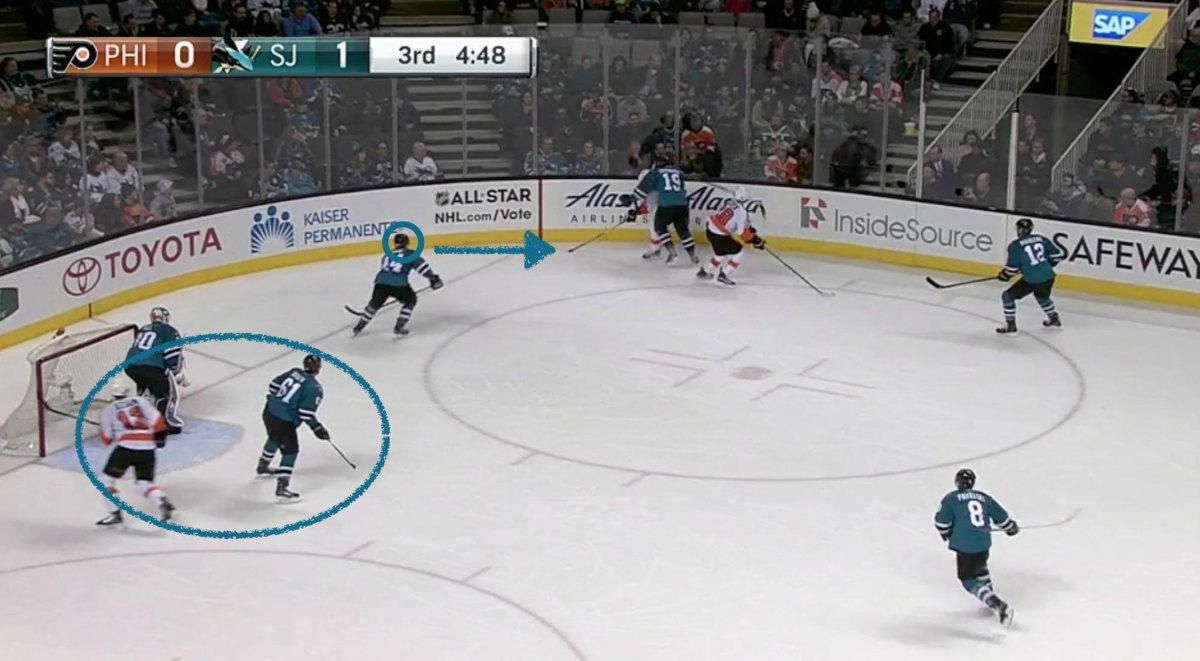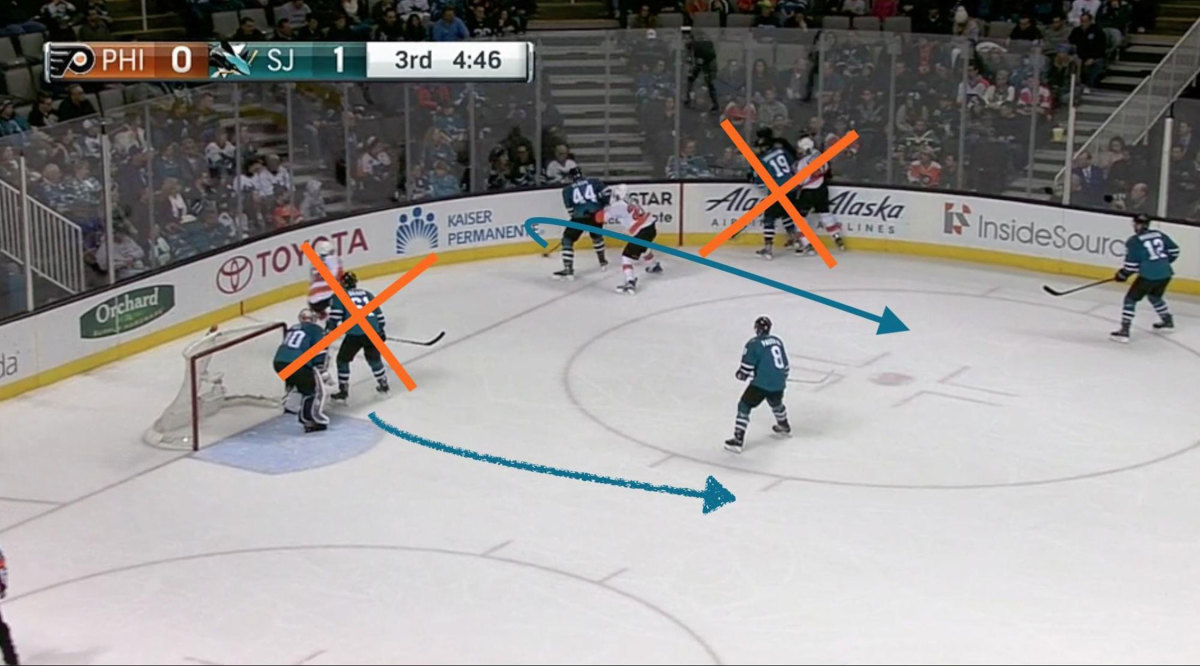Illustrated Review: Despite point totals, Vlasic, Spurgeon among top offensive defensemen

Close your eyes, and picture the top "offensive-defensemen" the NHL has to offer. It's likely your list will consist of the likes of Brent Burns, Erik Karlsson, and P.K. Subban. After all, the three blueliners are among the top-five scoring defensemen over the past four seasons.
Unfailingly, part of how defensemen are evaluated now is by their point totals. The Norris Trophy is "given to the defenseman who demonstrates throughout the season the greatest all-round ability in the position." But a quick scan of the past 17 winners shows that three have finished outside of the top-three scoring defensemen of that season: Drew Doughty (2016, ninth), Zdeno Chara (2009, 12th), and Nicklas Lidstrom (2007, 5th). The average position a blueliner finishes in the scoring race with respect to winning the Norris over the past 17 iterations of the trophy has been 2.8.
So ostensibly, there's some optic correlation between scoring a lot of points and having "the greatest all-around ability in the position." Increasingly, it seems a defenseman's offensive merits are measured by goals and assists.
Evaluating defensemen based on other metrics reveals a list of players who influence their team's offensive success without scoring a goal or being one of the two most immediate players to have touched the puck prior to scoring.
Illustrated Review: Examining Sidney Crosby's adeptness at creating space
Start by positing this question: If 'Player A' is on the ice for about 35 percent of his team's five-on-five minutes and also nearly 40 percent of his team's five-on-five goals, does that player drive offense?
'Player A' is Jared Spurgeon of the Minnesota Wild. He ranks first among NHL defenseman in scoring chances-for percentage over the past two seasons at 58.61 percent, according to Corsica.Hockey. Of the 275 goals the Wild has scored at five-on-five, he's been on the ice for 108. The 337 scoring chances he's been on the ice for represent over 39 percent of the total scoring chances the Wild has produced at 5-on-5.
Over the past two seasons, Spurgeon ranks 40th among defensemen in 5-on-5 scoring. Absent the headline-grabbing offensive numbers, Spurgeon has had a major impact on the Wild's offense.
There are other players with a similar profile. 'Player B' ranks third among defenseman in scoring-chances for percentage over the same time period, and has been on the ice for over 35 percent of his teams five-on-five goals while playing just over 30 percent of its five-on-five minutes.
'Player B' is Marc-Edouard Vlasic of the San Jose Sharks, and is tied for 22nd among defenseman in 5-on-5 scoring over the past two seasons.
This is where the eye-test fails in evaluating defensemen. A shift can last 50 seconds of pure chaos with moving parts that make it difficult to process everything that is happening on the ice. Then to limit your litmus test to what shows up on a box score excludes much of what the eye and score sheet can't catch.
The Minnesota Wild didn't score on this possession, but an extended shift in the Chicago Blackhawks' zone began with a zone entry facilitated by Spurgeon.
The types of plays can often lead to offense, even if a goal isn't scored, like on the play above. But facilitating clean zone entries—like Spurgeon did on the goal below—a repeatable skill, is one that creates offense.
On this Sharks goal, Vlasic forces a turnover along the wall, and quickly starts the Sharks' offense the other way, leading to a goal.
Vlasic identifies he has sufficient coverage down low in defense partner Justin Braun in front the crease. He can attack the puck and give San Jose an advantage along the boards.

As soon as Vlasic is in control, he has to make a quick decision. He can go up the wall to Joe Thornton, but he's being covered. Likewise, he can rim the puck the opposite way down the boards, but Braun isn't in good position, and Joe Pavelski has a long way to skate to meet that pass; it's more likely a Flyers defenseman would get there first.
Illustrated Review: Breaking down the Los Angeles Kings' overtime success
So instead, Vlasic quickly pivots outside on his edge, and finds an open Patrick Marleau as a safety valve atop the faceoff circle.

The decisive situation made and the ability to move the play north right after possession changes puts San Jose in a good offensive position.
Braun, knowing that Vlasic is down low, also has the freedom to activate and create numbers going the other way for the Sharks.
Facilitating clean zone exits is a repeatable skill, and one that can influence a goal as much as if not more than a secondary assist. That players like Spurgeon and Vlasic can consistently do this for their teams makes them offensively influential. "Offensive-defensemen" or not, they're nonetheless helping their teams to score.
